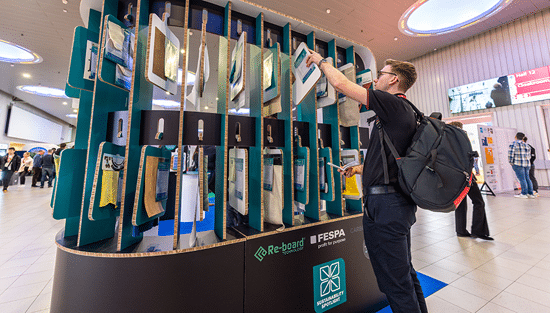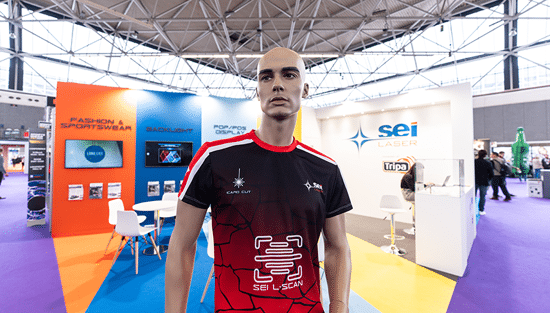Mass customisation: don’t believe the hype?
.png?width=750)
Personalisation offers great future potential for printing, but looking past the extravagant promises, what challenges does it present for printers?
Ever since Coca-Cola’s successful ‘Share a Coke’ campaign, which saw more than 1,000 different names printed on bottles of the popular beverage, personalisation has been a major buzzword within the print industry. It’s not hard to see why, given the impressive statistics associated with it. The value of the personalised gift market – from fashion to beauty products to entertainment and travel – is expected to reach $31 billion by 2021, according to HP – up 55% from 2016. The global custom t-shirt print industry is expected to surpass $10 billion by 2025, according to research firm Credence. Meanwhile, HP says that 70% of shoppers are willing to spend at least 10% more on personalised products.
It’s no surprise, then, that FESPA’s 2018 Print Census revealed that diversification into new markets and product offerings is a key focus of investment for 53% of printers – more than 50% of those surveyed said that customers were increasingly putting short-run printing, just-in-time manufacturing and personalisation at the top of their shopping lists. And this service is no longer the sole domain of big hitters like Coke. HP’s D4D software plug-in lets designers create a template that merges multiple fields of image data to create unique creative combinations of a single design. Alternative companies such as Ghost GmbH have developed toner based transfer technologies that facilitate small runs on small format lasers at a reasonable price.
Is the quest worth it?
But is personalisation truly the Holy Grail for printers? It certainly could be, but it brings with it a number of challenges that mustn’t be overlooked amid all the excitable hype. “One of the biggest issues is that printers jump into personalisation because it’s the new, sexy thing, and they don’t consider how it’s a completely different business to what they’re used to,” says Zsolt Rácz, Senior Vice-President of International Business Development at Printbox in Poland.
I see a lot of printers putting resources into personalisation services, but aren’t always giving enough consideration to the customer journey
This is especially the case when it comes to marketing, he says, noting that printers that have traditionally operated in a B2B sphere often struggle when it comes to attracting the consumer audience that’s after personalisation. “It’s a totally different market, and if you don’t have experience with that market you’ll need to hire a specialist or agency to help you get to grips with it, otherwise you won’t stand out.”
Indeed, while personalised print is a steadily growing area, there are already enough printers around to make for a competitive landscape. “If you’re going to do personalisation you have to do it well, or not at all,” says Zsolt, who recommends identifying a niche section of the market to target – weddings, for example, are a premium sector that lends itself to straightforward process standardisation once you’re established.
Customer service is another area for consideration, he says. “Personalised products demand a whole new level of customer engagement. There’s a generally accepted methodology for conducting traditional printing business, but personalisation is exactly that – it’s personal – and you need to be responsive.” He cites photobooks as an example. “Mothers with small kids are the biggest target audience here, and they’re most likely to create them online late at night. If there’s no-one around to help them if they get stuck, well… in these days of social media it’s not hard for just one consumer to kill a business with a bad review. I see a lot of printers putting resources into personalisation services, but aren’t always giving enough consideration to the customer journey.”
Standard bearers
In fact, customers are likely to be the biggest challenge in personalisation overall, says Dmitry Sarbaev, Co-Founder and Managing Director of Fluxmall DTG. “We spend a huge amount of time working with our customers,” he says. “Most of the people who want something personalised have no idea what they want, and they frequently don’t understand why a personalised item costs more, for each order – and it’s often just a one-off or short-run order – which is time-consuming before you even get to the actual printing.”
You can’t take a piecemeal approach, but instead need to rethink and integrate the designs of your products, the processes used to make and deliver the products, and the configuration of your whole supply network
And, of course, as evidenced by no end of promotional efforts gone wrong, personalisation has the potential to open up a whole can of worms around racism, obscenity and sexism. Nutella’s design-a-label campaign, #WalkersWave, Adidas and Arsenal’s Dare to Create collaboration and the National Lottery’s partnership with Team GB have all fallen foul of jokesters – and more nefarious types – seeking to exploit personalisation for questionable means.
“We have very strict policies on what we will and will not accept and we review everything personally,” says Dmitry. “Our ethos is to bring joy and happiness to our work and our moral standards are pretty high – if an order contradicts this then we have to stop it. The problem there, of course, is that there will always be a company somewhere that will do it instead.”
Once you’ve got the customers sorted it’s time to get on with the job itself, and that presents its own challenges. Despite the increasing availability of affordable technology to facilitate personalisation to print personalised products, its less straightforward to gain a clear understanding of the coding and programming required to establish automatic workflow. Different workflow systems often prove problematic for printers new to the arena.
“Printing one item is very different to producing 1,000 of the same items in one shot,” says Printbox’s Zsolt. “You can’t take a piecemeal approach, but instead need to rethink and integrate the designs of your products, the processes used to make and deliver the products, and the configuration of your whole supply network. If your business takes off then your workload will grow exponentially, and if you’re not prepared for a big number of orders you’re going to have a huge problem.”
Upholding quality
And this leads directly to another concern: quality. “With large runs, you have the opportunity to get the quality right. With short runs, you have to make sure every item is top notch,” says Marco Olivotto, Colour Consultant and Digital Printing Advisor. “A product can be wonderfully personalised, but if the quality is poor then it loses its merit.”
Instead of flocking to personalisation for personalisation’s sake, he says, printers would do well to spend time focusing on first achieving high levels of quality in their products, because when personalisation becomes the norm, customers will use that as a differentiator between companies. Indeed, Fluxmall’s Dmitry agrees that personalisation, particularly in the direct-to-garment industry, faces significant quality control issues: “People often expect levels of quality higher than can be realistically achieved.”
The whole process is really no different to envelope mailshot printing, which has been around for years
However, Marco has a slightly different attitude towards personalisation overall – one that is somewhat less awed and enthusiastic than others in the industry. “The point of personalisation is that something is mine, and mine only,” he explains. “A musician writing my name on a record has meaning, but if it’s a machine doing it, then it’s industrial, and the whole process is really no different to envelope mailshot printing, which has been around for years.” There is a risk, he says, that the trend for personalised print products will eventually plateau, as their increasingly mainstream nature no longer renders them unique or special. “The question, then, is what printers will do with it to continue making it worth their while.”
FESPA’s Technical Manager, Graeme Richardson-Locke, comments: “With all new business opportunities, a gimmick is not enough. Defining a market, establishing the quality expectation and delivering that on time, every time, are prerequisites. While printing requires good process control and attention to detail, the bigger question here is all about planning and defining products for specific audiences before deciding on any investment.”
Become a FESPA member to continue reading
To read more and access exclusive content on the Club FESPA portal, please contact your Local Association. If you are not a current member, please enquire here. If there is no FESPA Association in your country, you can join FESPA Direct. Once you become a FESPA member, you can gain access to the Club FESPA Portal.
Topics
Recent news

New sustainable materials at Sustainability Spotlight
Sustainability Spotlight returned by popular demand to FESPA Global Print Expo last month in an exhibit curated by The Good Factory.

Sportswear Pro: building ‘Brand Me’
After the success of the inaugural Sportswear Pro last month, we spoke with panellist and personalisation expert James Lawrence-Jones about the most exciting revelations at the event.

